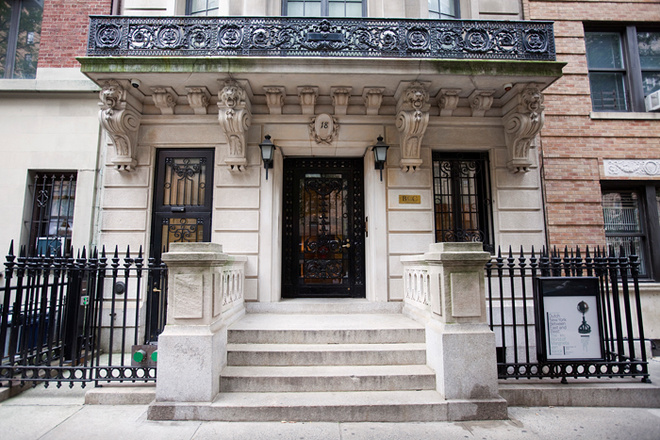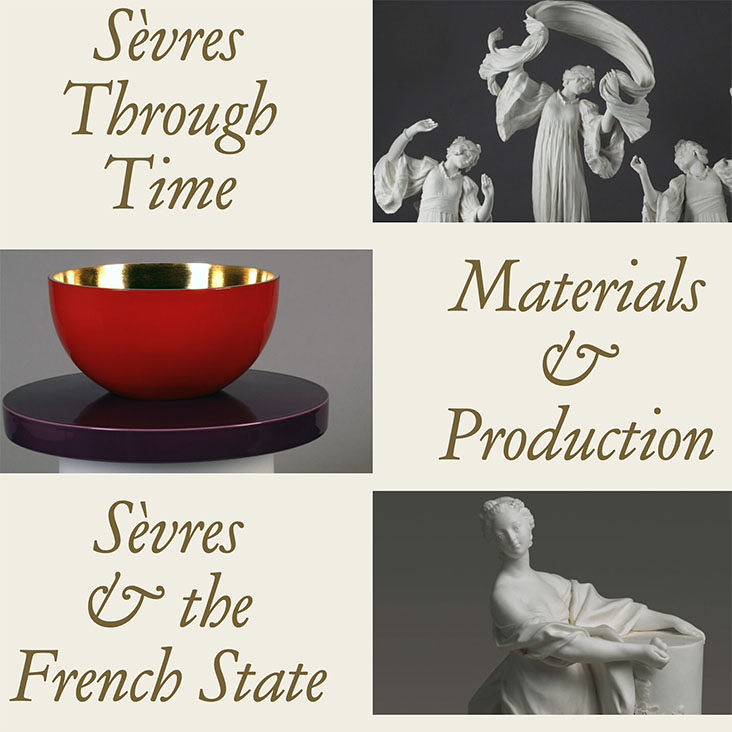Thanks to a new initiative at Bard Graduate Center (BGC), students can make proposals for speakers or events in the Wednesdays@BGC series, giving us the chance to engage with researchers and practitioners in underrepresented areas of study. Organized by BGC’s Public Humanities + Research team, Wednesdays@BGC have quickly become an essential part of the curriculum beyond the classroom.
This past year, I had the pleasure of planning one of the first student-proposed events, entitled At Home in the Philippine Village. For me, this was the perfect opportunity to create space for discussions about Philippine-American history, one of my areas of research, at BGC.
My event, an artist talk with
Janna Añonuevo Langholz, had very meaningful resonances for me. It centered around the Philippine Village at the 1904 World’s Fair in St. Louis, Missouri. I lived in St. Louis from ages three to eleven, and my elementary school was in Clayton, just a short walk to Forest Park, the site of the fair. One year, I was assigned a research report and presentation on a topic related to the World’s Fair. As a young Filipina American, I was excited to connect this assignment to my own heritage after I learned about the Philippine Village at the World’s Fair. The stories of how Filipinos, colonial subjects of the United States, were displayed at the fair, so far from their homeland, in human exhibitions for the entertainment of Americans, stuck with me for years. In what I consider to be my first-ever research project, I shared with my classmates an elementary school version of the story of the Philippine Village. Meanwhile other students in my class presented on the invention of the ice cream cone—a much lighter topic.
Nearly twenty years later, in October 2022, I saw one of Langholz’s posts on Instagram announcing that the city of Clayton had begun the process of officially commemorating the Philippine Village Historical Site. I was immediately drawn back to my childhood project and wanted to know more. I dived into a rabbit hole researching Langholz and her work commemorating the lives of the people who lived and died in the Philippine Village and soon realized that she would be an amazing person to invite to BGC as a guest speaker.
In September 2023 I submitted a proposal to the Public Humanities + Research team to bring Langholz to BGC for one of our Wednesday events and was ecstatic to learn a few weeks later that the selection committee was very interested in my proposal and that my event was accepted. From the beginning, I was involved in the event planning process, with the help of the entire Public Humanities + Research team. I invited Langholz to come to BGC, looked over her proposed title and abstract for the event, and worked with her and director of Public Humanities + Research Andrew Kircher to plan the flow of the evening. I also welcomed her to BGC when she arrived, and we spent a wonderful afternoon bonding with
Patricia Orpilla, another Filipina American artist and a spring 2024 BGC Fields of the Future Fellow.
I was initially worried that Langholz’s talk might not be well attended, as Philippine and Philippine American history is not a subject that BGC frequently engages with. However, the evening of the lecture my fears subsided as I watched the lecture hall fill up with people, many of whom were members of the Filipino community in New York coming to Bard Graduate Center for the first time. I should have known that the Filipino community always shows up! The fact that many of the attendees were first-time visitors to BGC made the event even more rewarding.
I had the pleasure of introducing Langholz and explaining my own connection to the talk and its subject material. She then began her presentation with her life story: how her Filipina mother and American father of German ancestry met and decided to move to St. Louis, and how she was born at the former site of the World’s Fair. She shared how she became interested in the Philippine Village during the early days of the COVID-19 lockdown and began posting about it on social media. Langholz discovered how her ancestors had contributed materials to displays at the Philippine Village, particularly in the forestry exhibition. Eventually, she began giving walking tours of the Philippine Village locations, through Forest Park and residential neighborhoods of Clayton. She has also gotten the site recognized by the city of Clayton, and they have plans to erect a permanent historical marker this fall.
One of the most impressive aspects of Langholz’s’s work was her quest to identify the names of all 1,200 people brought to the Philippine Village. She has also discovered the final resting places of several people who died at the World’s Fair and uncovered the horrible truth that the remains of a few of these people were improperly disposed of by the Smithsonian Institution. Now, she works with communities in the Philippines as well as Filipino Americans in the United States to properly memorialize the Philippine Village and those who inhabited it.
Following Langholz’s inspirational presentation, I also led the question and answer portion of the event, during which I asked her questions relating her work to the interests of the BGC community, such as her creation of an archive of materials about the Philippine Village and the presence of Philippine material culture and craft at the World’s Fair. Many guests in the audience had questions as well and were eager to meet and talk to Langholz after the program ended. Seeing so many people resonate with her and her words gave me great hope for interest in Philippine American history. This history is very important, as many people are unaware that the Philippines was an American colony from 1898 until 1946. This is not just the history of Filipinos or Filipino Americans, this is
American history.
Hearing Langholz speak and having the opportunity to engage with her and her research practice was very helpful for some of my own research projects. Part of my qualifying paper, the capstone of the BGC MA program, which I completed this past spring, looked at the reception of Philippine textiles in the United States. I am planning to continue this research as I begin my PhD at BGC this fall. I am also currently writing a book chapter on collections and exhibitions of Philippine textiles and dress in the United States. Many of the textiles and garments on display at the World’s Fair were accessioned into US museum collections after the fair ended. I am considering displays of people as alternative, colonialist sites for display of clothing and material culture outside of traditional museum institutions.
In the future, I hope to work with Langholz to identify more objects from the World’s Fair which have been dispersed to various museum collections across the United States, including the American Museum of Natural History (AMNH), the Peabody Museum of Archaeology and Ethnology at Harvard University, and the Penn Museum. The AMNH was responsible for distributing many of these items to other museum collections, including the RISD Museum in Providence, Rhode Island, where I am currently working on an exhibition of Philippine textiles that will open in November 2024. Some of these textiles, given as gifts from AMNH in 1909, were collected after the World’s Fair.
At Home in the Philippine Village was a single event, but its resonance continues to grow. It was
reviewed by Diana Budds in the New York Review of Architecture, providing greater recognition of Langholz’s work and BGC’s programming. Since the event took place in mid-March, I have been able to engage with a larger community of Filipinos and Filipino Americans in New York City. For example, a few weeks later, I attended a book signing by the Filipina artist Stephanie Syjuco in Chelsea, where I reconnected with several Filipino creatives who attended my event. In April, I attended
Blood & Water, a public history walking tour created by Dr. Michael Salgarolo, a historian and professor at New York University who I had met at Langholz’s talk, highlighting the lives of Filipinos in Brooklyn in the early twentieth century. Once again, I encountered attendees of my event during Salgarolo’s tour! He even mentioned the event during the walk, and several people who weren’t able to attend asked me about it afterwards.
I look forward to many more public events proposed and organized by BGC students. It’s an opportunity to engage with new communities of scholars and gain experience in public programming. I am so grateful to have had this experience, which connected me with collaborators and an engaged community as I begin my PhD journey at BGC.














